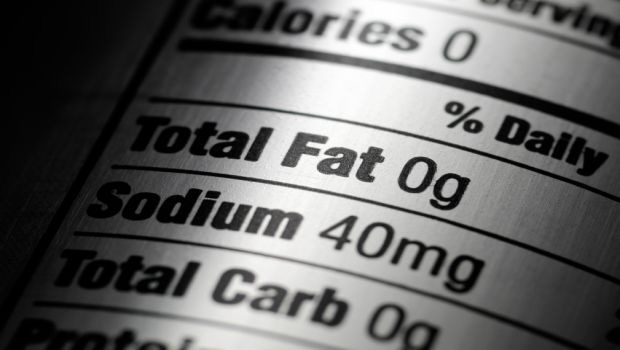Just in time to piggyback on the recently released 2015 Dietary Guidelines for Americans that called for a reduction in sodium consumption, new survey findings from USDA’s Agricultural Research Service (ARS) has found more than 90 percent of Americans consume more than the maximum daily sodium intake recommended by the government. But sodium plays many functional roles in foods like texture improvement, color enhancement and microbial control, and the solution to sodium reduction isn’t as simple as cutting a percentage of salt from processed foods.

Just in time to piggyback on the recently released 2015 Dietary Guidelines for Americans that called for a reduction in sodium consumption, new survey findings from USDA’s Agricultural Research Service (ARS) has found more than 90 percent of Americans consume more than the maximum daily sodium intake recommended by the government.
The findings are a result of a collaborative project by the ARS Nutrient Data Laboratory (NDL), ARS Food Surveys Research Group, CDC and FDA to monitor key sodium-contributing foods. They launched an online, public-access dataset of more than 1,200 foods that contain sodium added during preparation or processing, before purchase by consumers. Foods included in the dataset are ones commonly reported as eaten by respondents in the national food-intake survey called “What We Eat in America."
Of the foods tracked for the project, just more than 10 percent contribute particularly high levels of dietary sodium and have been termed “sentinel foods" (125 popular, sodium contributing, commercially processed foods that contain sodium added during preparation, i.e. prior to purchase by consumers. Of these 125 foods, 92 are processed foods sold in stores and 33 are restaurant/fast food items.)
All foods in the database were sampled and chemically analyzed between 2010 and 2013 to obtain baseline values. The researchers observed a wide range of sodium levels among foods studied. For example, some canned tomatoes had 4.5 times more sodium than others. Among foods categorized as savory snacks and crackers, plain tortilla chips had one-quarter the sodium of hard pretzels. Most of the foods sampled (88 percent) from fast-food outlets or restaurants exceeded the FDA sodium limit for a claim of “healthy."
While the purpose of the dataset is to monitor sodium in foods and in the U.S. diet, other agency professionals and public health officials use the information to focus sodium-reduction efforts. Potassium, total dietary fiber, total and saturated fat, and total sugar also are monitored because their levels may change when manufacturers and restaurants reformulate their products to reduce sodium content.
According to ARS, most dietary sodium comes from processed and restaurant foods—and reducing sodium in these foods is key to lowering the amount of sodium in the U.S. diet. The 2015 Dietary Guidelines call for adults and children ages 14 years and over to limit sodium to less than 2,300 mg per day and children younger than 14 years should consume even less sodium (1,500-2,200 depending on age).
So this brings me to the point of my blog.
Let's face it, sodium is found across all sectors of food including snacks, bakery and cereal, sauces and soups, convenience foods, condiments, bread, cereal, processed meat, desserts, dairy and frozen foods. The fact is sodium plays many functional roles in foods like texture improvement, color enhancement and microbial control, and the solution to sodium reduction isn’t as simple as cutting a percentage of salt from processed foods.
As pressure mounts to reduce sodium in the food supply, it is important to note many food and beverage companies have been proactive and taken steps to lower sodium levels in their products. While sodium is a top concern for consumers, market research shows fewer consumers are looking for sodium on labels, suggesting reduction efforts will continue to rest primarily on manufacturers.
As Tate & Lyles Nancy Gaul pointed out in her guest blog “Marketing Your Reduced-Sodium Products," many food manufacturers are choosing to take a silent approach to reducing the sodium content of their products. This “stealth" reduction strategy means marketers aren’t making sodium-reduction claims on packaging, as opposed to “overt" strategies that do make those claims. However, some brands are using overt strategies, but they represented only 3 percent of all U.S. product launches in 2013. While stealth and overt reformulation efforts are gaining momentum, both strategies present a challenge for food manufacturers. The reality is that the reduced-sodium product has to maintain the great taste consumers expect. Ingredient suppliers are working to provide innovative solutions to help manufacturers make this possible.
Be sure to check out “The Salt of the Matter: Trends in Sodium Reduction" Digital Issue that dives into salt's role in sodium reduction, and addresses current market trends, along with ingredients and strategies to successfully reduce sodium without sacrificing taste or product quality.
Our “Reducing Sodium in the Food Supply: A Journey in Progress" report takes a technical look at the research related to salty taste perception and consumer purchasing behavior, and also delves into sodium-reduction strategies that have proven successful, as well as those that hold promise for the future.
About the Author(s)
You May Also Like






.png?width=800&auto=webp&quality=80&disable=upscale)